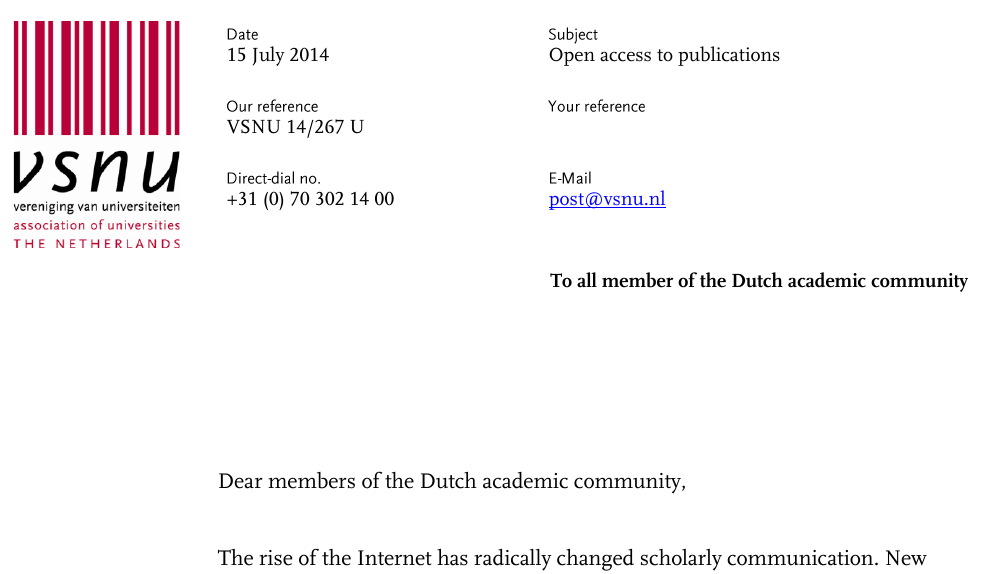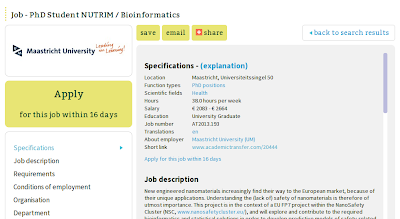-

On Open Access in The Netherlands
Yesterday, I received a letter from the Association of Universities The Netherlands (VSNU, @deVSNU) about Open Access. The Netherlands is for research a very interesting country: it’s small, meaning we have few resources to establish and maintain high profile centers, we also believe strong education benefits from distribution, so we we have many good universities, rather than a few excelling universities. Mind you, this clouds that we absolutely do have excelling research institutes and research groups; they just are not concentrated in one university. -
Slow publishing innovation: SMILES in ACS journals
Elsevier is not the only publisher with a large innovation inertia. In fact, I think many large organizations do, particularly if there are too many interdependencies, causing too long lines. Greg Laundrum made me aware that one American Chemical Society journal is now going to encourage (not require) machine readable forms of chemical structures to be included in their flagship. The reasoning by Gilson et al. is balanced. It is also 15 years too late. This question was relevant at the end of the last century. The technologies were already more advanced than what will now be adopted. 15 years!!! Seriously, that’s close to the time it takes to bring a new drug on the market! -
Elsevier's new text mining initiative is a step sideways
Elsevier’s new ideas on text mining are getting a lot attention now. Sadly, they get it wrong, again. On the bright side, all other publishers, which are expected to follow this year, can learn from this mistake. -

Looking for a PhD and a Postdoc to work on Open Science Nanosafety
I am happy that I got my first research grant awarded (EU FP7), which should start after all the contracts are signed, etc, somewhere early 2014. The project is about setting up data needs for the analysis of nanosafety studies. And for this, I have the below two position vacancies available now. If you are keen on doing Open Science (CDK, Bioclipse, OpenTox, WikiPathways, …, …), working within the European NanoSafety Cluster, and have an affinity with understanding the systems biology of nanomaterials, then you may be interested in applying. -
Programming in the Life Sciences #9: APIs and Web Services
Continuing on the theory covered in this course, this part will talk about application programming interfaces (APIs) and web services. -
Programming in the Life Sciences #11: HTML
HTML (HyperText Markup Language), the language of the web, is no longer the only language of the web. But it still is the primary language in which source code of webpages is shared. Originally, HTML pages were always static: the only HTML source of a web page was that was downloaded from a website. Nowadays, much HTML the is visualized in your web browser, is generated on the fly with JavaScript. In fact, that is exactly what you will learn to do in this course. -
Programming in the Life Sciences #10: JavaScript Object Notation (JSON)
As said, JSON is the format we will use as serialization format for answers given by the Open PHACTS LDA. The API actually supports XML, RDF, HTML, and TSV too, but I think JSON is a good balance between expressiveness and compactness. Moreover, and perhaps a much better argument, JSON works very well in a JavaScript environment: it is very easy to convert the serialization into a data model: